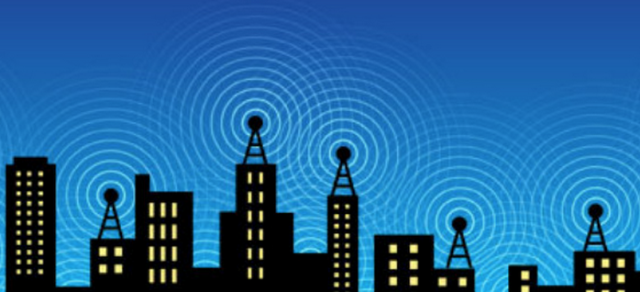
A plan to use Wi-Fi airwaves for cellular service has sparked concerns about interference with existing Wi-Fi networks, causing a fight involving wireless carriers, cable companies, a Wi-Fi industry trade group, Microsoft, and network equipment makers.
Verizon Wireless and T-Mobile US plan to boost coverage in their cellular networks by using unlicensed airwaves that also power Wi-Fi equipment. While cellular carriers generally rely upon airwaves to which they have exclusive licenses, a new system called LTE-Unlicensed (LTE-U) would have the carriers sharing spectrum with Wi-Fi devices on the unlicensed 5GHz band.
Verizon has said it intends to deploy LTE-U in 5GHz in 2016. Before the interference controversy threatened to delay deployments, T-Mobile was expected to use the technology on its smartphones by the end of 2015. Wireless equipment makers like Qualcomm see an opportunity to sell more devices and are integrating LTE-U into their latest technology.
Using 5GHz will let cellular networks boost data speeds over short distances without requiring users to log in to a separate Wi-Fi network. But companies from all over the technology industry are arguing over how much this new technology will interfere with Wi-Fi networks and how quickly the Federal Communications Commission should move in allowing it.
The latest development came yesterday when Verizon, T-Mobile, Alcatel-Lucent, Ericsson, and Qualcomm sent a letter to the FCC opposing a Wi-Fi Alliance proposal that would slow the process of getting LTE-U out of testbeds and into real-world networks.
Wi-Fi Alliance seeks delay
The Wi-Fi Alliance is an industry trade group that certifies equipment to make sure it doesn't interfere with other Wi-Fi-certified equipment operating in the same frequencies. The group this month asked the FCC to avoid authorizing any LTE-U equipment until the Wi-Fi Alliance is able to conduct its own tests on vendor devices using new interference testing guidelines that the Alliance is still developing.
The Wi-Fi Alliance has a long list of members covering pretty much the entire technology industry, including the five companies opposing its request.
"As members of the Wi-Fi Alliance interested in extending the benefits of LTE on unlicensed spectrum to our customers, we urge the Commission to reject this unprecedented request," Verizon et al wrote to the FCC. "Allowing an organization that certifies interoperability for one particular technology to become the gatekeeper for another technology to use unlicensed spectrum would jeopardize the Commission’s entire framework that has made unlicensed spectrum so successful as an open platform for permissionless innovation."
Various tech companies and consortiums have taken sides. Microsoft, noting that users of its devices depend on Wi-Fi, said it worries that LTE-U will "degrade the performance of services delivered over Wi-Fi and other technologies that rely exclusively on unlicensed spectrum."
LTE-U may also be used in 3.5GHz airwaves that the FCC recently opened to wireless broadband.
Big Cable wades in
Cable TV and Internet providers have gotten involved because they've set up networks of Wi-Fi hotspots throughout the country. The National Cable & Telecommunications Association (NCTA), which represents Comcast and many other cable companies, raised concerns about LTE-U and a related technology called Licensed Assisted Access (LAA).
"[R]esearch demonstrates that both LTE-U and LAA would severely decrease the performance of any nearby Wi-Fi network. Widespread deployment of LTE-U or LAA would therefore harm American consumers, schools, and innovators by dramatically reducing the utility of the unlicensed bands for everyone but the companies that already hold licensed spectrum," the NCTA wrote.
The NCTA said cable industry research shows that LAA in certain circumstances would lower the Wi-Fi transmission success rate "by 77 percent with fifteen nearby consumer Wi-Fi devices, and by 88 percent with twenty nearby consumer devices."
T-Mobile argued that cable company claims are exaggerated. Claims "that the technology will adversely impact Wi-Fi operations are based on testing with parameters set at extremes that do not represent realistic deployments or do not reflect actual LTE-U specifications," T-Mobile wrote. Qualcomm said its testing shows that Wi-Fi access points often have better throughput when sharing a channel with LTE-U than when sharing a channel with another Wi-Fi access point.
The Wi-Fi Alliance says it wants to host workshops beginning in November "to advance dialogue and understanding about fair spectrum sharing," but that's clearly not fast enough for wireless carriers who say LTE-U is just about ready for production.
The FCC hasn't made any final decisions yet. In a filing three weeks ago, the commission said the issue is complicated by the fact that they are "potentially four different types" of LTE-U technology because of separate efforts by industry groups and a proprietary version being developed by Qualcomm.
The FCC has asked for more information on how the technology will work and says any new equipment will have to go through the commission's standard process for dealing with new technologies. That means certification groups must consult with the FCC before certifying any equipment, and the FCC's lab will ask for "a full technical description of how the device will operate" and sample devices for testing.
reader comments
103